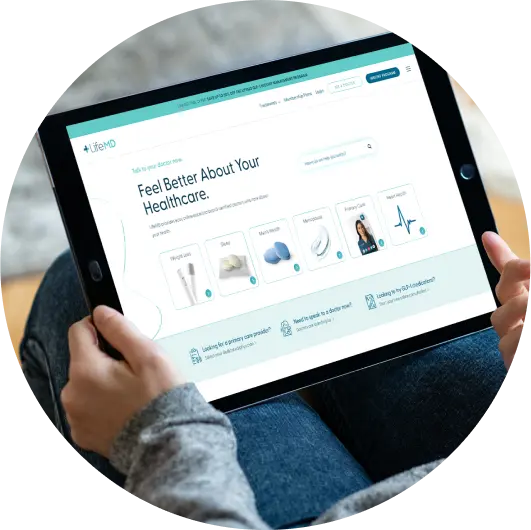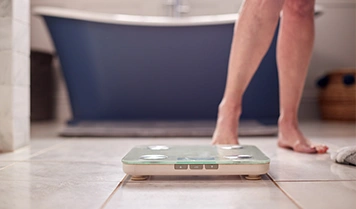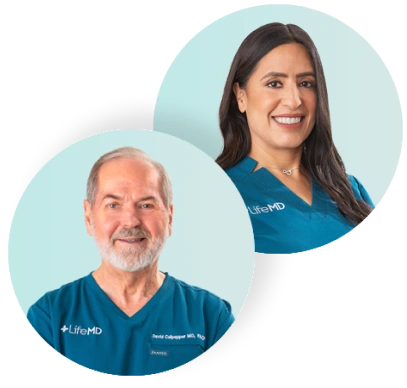
What is Telemedicine?
Telemedicine refers to the remote delivery of medical services. It uses technology to allow patients and healthcare providers to connect virtually, no matter where they are.
Through secure video consultations, phone calls, and online messaging, telemedicine enables patients to consult licensed medical professionals from the comfort of their own homes.
With telemedicine, healthcare is more accessible, convenient, and efficient.
Lets Get StartedTelehealth vs. Telemedicine:
A closer look at the differences
Telehealth
Telehealth refers to more than just medical consultations and preventative care. It’s a broad term used to describe all forms of remote healthcare services, including:
Telehealth can involve various activities, such as:
Telemedicine
Telemedicine is a type of telehealth service that involves using technology to provide remote medical care.
It largely focuses on enhancing healthcare delivery by using electronic telecommunication tools to:
Telemedicine also involves real-time interactions between healthcare providers and patients in a consultation. These interactions typically involve:
What are the benefits of Telehealth?

I love what I do because I get the pleasure of being a part of my patients’ lives.
As we move toward their health goals together, I love cheering them on. I’d say my care philosophy is to demonstrate honesty, persistence, and compassion. This way, my patients and I become trusting partners, working together to achieve the best possible outcomes.
Nicole Baldwin
Family Nurse Practitioner
Frequently asked questions
What should I expect from my telehealth physician?
At LifeMD, each healthcare provider is a licensed professional and trusted expert that you can rely on to diagnose, treat, and/or help you manage health conditions before they turn into serious problems.
What type of care can I get through telehealth services like LifeMD?
LifeMD supports a wide range of healthcare services, including:
- Primary care consultations (such as minor infections and injuries, sexual health concerns, management of chronic health conditions, and routine check-ups or preventative care)
- Specialty consultations (such as dermatology, anxiety, and weight management)
- Medication management
- Symptom tracking and monitoring
- Referrals for imaging, blood pressure checks, and blood tests, if needed
For more information, you can visit our FAQ page or get in touch with a member of our care team.
Can telehealth prescribe antibiotics?
Yes, telehealth doctors and nurses can prescribe antibiotics and a wide range of other medications when medically necessary, following an online consultation. This offers patients the convenience of obtaining essential treatments without in-person visits.
Are telehealth consultations as effective as in-person healthcare?
Research has shown that telehealth services can be just as effective as in-person care, particularly for non-emergency and routine consultations.
It’s important to note that certain conditions or situations may still require in-person visits.
Can I do telehealth from another state?
You can typically engage in telehealth services with a doctor in a different state, but it may depend on state-specific regulations. Many states in the United States have policies allowing for cross-state telehealth consultations. However, it's important to check with your doctor and the relevant state medical boards for any restrictions or requirements that may apply to your specific situation. LifeMD has provider coverage in all 50 states.
When was telehealth invented?
Telehealth, in its earliest form, can be traced back to the 1920s and 1930s when radiology images were transmitted via telephone. However, it gained significant momentum in the late 20th century with the advancement of technology, making remote healthcare consultations and services more accessible.
During the COVID-19 pandemic, telehealth experienced a remarkable surge in popularity as a safer means of providing healthcare services, reducing the risk of virus transmission in healthcare facilities. Telehealth became a crucial tool for patients to access medical care while adhering to social distancing and quarantine measures.
Telehealth continues to remain a vital and ongoing solution for safe, accessible, timely medical care.
Is telehealth secure and private?
At LifeMD, we prioritize the privacy and security of our patients and their information, and we implement careful measures to safeguard their data.
We use encrypted communication channels that comply with regulations like the Health Insurance Portability and Accountability Acts (HIPAA) in the United States.
Will my health insurance cover my telehealth appointment?
LifeMD currently does not accept insurance as payment for our membership plans. However, some of our services may be HSA/FSA eligible.
This means that if your insurance plan has a savings account, you may be able to use it toward paying for your LifeMD membership.
What should I do if I need to go to the hospital or require imaging?
If you require advanced testing — like imaging or bloodwork — LifeMD is able to support you. Physicians can refer you directly to in-person testing facilities where you can get the lab tests you need. We have partnerships with national lab chains, allowing you to get your labs done quickly and easily.
Although LifeMD is committed to providing high-quality remote healthcare, it’s important to remember that virtual appointments should never substitute emergency care. If you are experiencing a critical or life-threatening medical issue, call 911 or go to the emergency room immediately.
Can I receive a doctor’s note or other medical forms through LifeMD?
Providers can issue a doctor’s note for up to two days of a short-term work or school absence.
Currently, we cannot supply or complete other forms such as jury duty release, FMLA forms, and emotional support animal forms to patients. However, we can often refer you to specialists who can help if you require these documents.







